Unemployment, a fundamental concept in economics, carries significant implications for individuals and the broader economy. It not only reflects the labor market's dynamics but also signals underlying issues within different sectors. Understanding the intricacies of unemployment involves dissecting its various forms, causes, and consequences. By exploring the complexities of this phenomenon, one can gain valuable insights into the multifaceted nature of joblessness and its profound impact on society.
Key Takeaways
- Unemployment is seeking work without finding employment, often requiring government support.
- Categories include frictional, cyclical, structural, and institutional unemployment, each with distinct causes.
- Economic indicators like high rates signify economic distress, while low rates indicate a potentially overheated economy.
- Measuring unemployment is crucial for understanding workforce challenges and historical trends for informed policy-making.
Understanding Unemployment
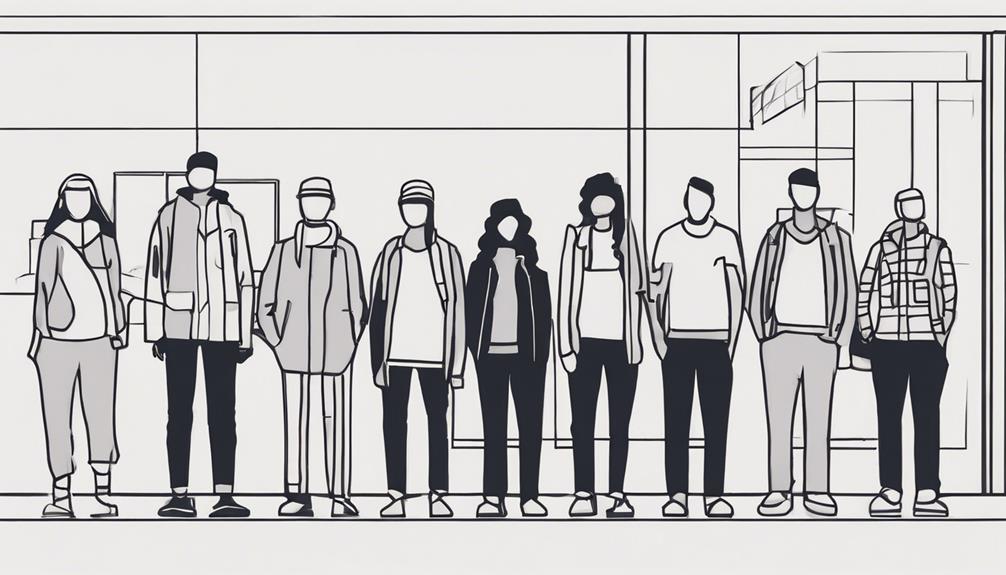
Within the realm of labor economics, comprehending the intricate concept of unemployment is paramount for grasping the dynamics of workforce participation and economic stability. Unemployment refers to the state of being actively seeking work but unable to secure employment, as defined by the Bureau of Labor Statistics. This status is crucial as it determines eligibility for job benefits provided by the government, influencing individuals' livelihoods.
Being unemployed not only affects individuals seeking a job but also has broader implications for the economy. The government plays a significant role in providing support to the unemployed through various benefits and programs aimed at assisting them during their job search. Understanding the nuances of unemployment helps in crafting effective government policies that can alleviate the financial strain experienced by those without jobs while also stimulating economic growth.
In essence, unemployment is a multifaceted issue that goes beyond mere joblessness, encompassing aspects of eligibility for benefits and the role of government intervention in addressing this economic challenge.
Sign of Economic Distress
Understanding the impact of high unemployment rates serves as a key indicator of economic distress, reflecting the challenges faced by both individuals and the broader economy during periods of financial instability. The Bureau of Labor Statistics plays a crucial role in calculating the official unemployment rate, which represents the percentage of individuals actively seeking employment but unable to find work. Alternative Measures of Labor, such as the U-6 rate, provide a broader picture by including discouraged workers and those employed part-time for economic reasons. Frictional unemployment, a type of unemployment resulting from temporary transitions or job searches, also contributes to the overall economic landscape. Concepts and Definitions related to unemployment delve into the intricacies of how it impacts society, with long-term high rates indicating deep-rooted issues within the economy. By analyzing these factors, policymakers can better understand the severity of economic distress and take appropriate measures to address the challenges faced by individuals and businesses.
Sign of an Overheating Economy
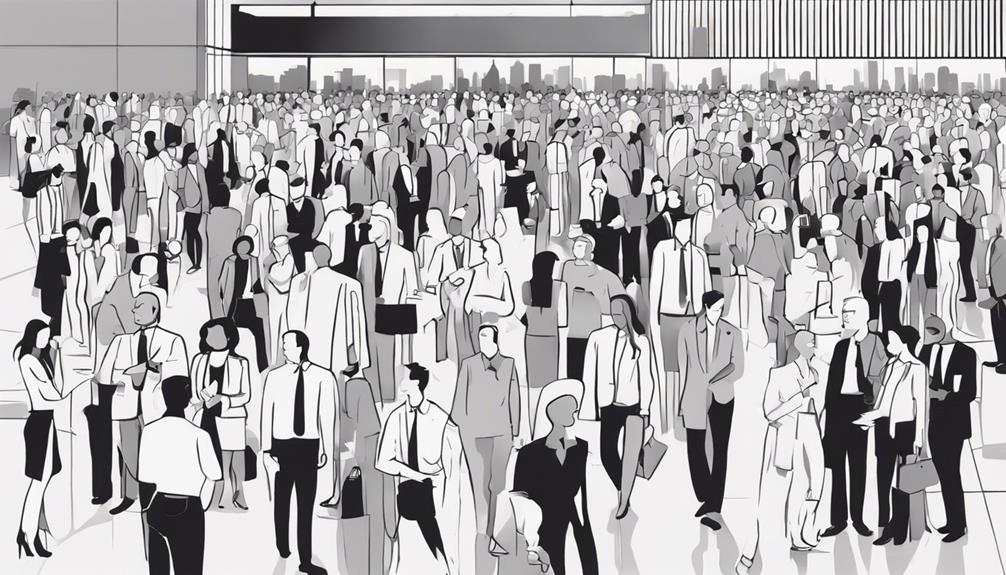
An indication of an overheating economy is often reflected in a low unemployment rate, typically below 4%, signaling potential inflationary pressures. When the unemployment rate falls below this threshold, it suggests a tight labor market where there are more job vacancies than there are skilled workers available, leading to increased competition among businesses to attract employees. In such a scenario, wages tend to rise as companies offer higher pay to entice workers, reflecting the strong demand for labor. Moreover, in a bid to retain and attract talent, employers may also provide additional benefits, bonuses, and perks.
However, the downside of an overheating economy is the challenge that businesses face in finding skilled workers, potentially resulting in productivity constraints. As job openings remain unfilled due to the scarcity of qualified individuals, it can hinder overall economic growth and sustainability. Therefore, while a low unemployment rate can indicate a robust economy, it also presents complexities that need to be managed effectively to maintain a balance between supply and demand in the labor market.
Categories of Unemployment
Understanding the categories of unemployment is crucial for comprehending the complexities of labor markets. By examining frictional, cyclical, structural, and institutional unemployment, we can gain insight into the diverse factors contributing to joblessness. These categories provide a framework for analyzing the causes and impacts of unemployment on individuals and economies.
Types of Unemployment
Various forms of unemployment, such as frictional, cyclical, structural, and institutional, reflect different underlying causes in the labor market.
- Frictional unemployment arises from temporary job transitions, like changing careers or moving.
- Cyclical unemployment is closely tied to economic cycles, increasing during recessions and decreasing in periods of growth.
- Structural unemployment occurs due to technological advancements or industry structure changes displacing workers.
Understanding these types of unemployment is crucial in developing targeted solutions to address specific challenges within the labor market efficiently. By recognizing the distinct causes of each type, policymakers and organizations can implement interventions tailored to mitigate the impacts of frictional, cyclical, structural, and institutional unemployment effectively.
Causes of Unemployment
Examining the distinct categories of unemployment sheds light on the diverse factors contributing to the current labor market challenges. The table below outlines the key categories of unemployment:
| Category | Description |
|---|---|
| Frictional Unemployment | Occurs due to temporary job transitions and search periods. |
| Cyclical Unemployment | Results from economic downturns and decreased demand for labor. |
| Structural Unemployment | Arises from technological advancements and shifts in industries. |
| Institutional Unemployment | Stems from long-term factors such as government policies and incentives. |
Understanding these categories of unemployment helps in identifying specific causes and devising appropriate solutions to address the complex issue of unemployment. Each category has its unique characteristics, requiring tailored strategies for mitigation and prevention.
Impact of Unemployment
Unemployment's impact on society is multifaceted, influenced by the distinct categories of frictional, cyclical, structural, and institutional unemployment.
- Unemployment Benefits: The provision of unemployment benefits by governments serves as a crucial support system for individuals facing job loss, helping them meet basic needs during uncertain times.
- Government Programs: Various government programs aim to reduce unemployment rates through job training, re-employment assistance, and other initiatives targeted at specific types of unemployment.
- Measures of Labor Underutilization: Understanding and tracking measures of labor underutilization provide valuable insights into the overall health of the labor market and the effectiveness of policies aimed at reducing unemployment rates.
Types of Unemployment
Exploring the types of unemployment, structural unemployment is rooted in changes to the economy, often caused by technological advancements, leading to long-term job mismatches. Additionally, cyclical unemployment reflects the ebb and flow of economic cycles, rising during downturns and falling during periods of growth. Understanding these distinctions is essential for policymakers to tailor interventions that address specific causes and effects within the labor market.
Structural Unemployment Causes
Structural unemployment, stemming from mismatches between job seekers' skills and available job openings, is a persistent economic challenge requiring strategic interventions.
- Technological Advancements: Rapid changes in technology can render certain skills obsolete, leading to a gap between job requirements and workers' capabilities.
- Job Mismatch: Shifts in demand for specific occupations can create a surplus of workers in declining industries and a shortage in growing sectors, exacerbating unemployment.
- Geographic Disparities: Discrepancies in job opportunities across regions can leave workers in areas with limited employment prospects, necessitating retraining or relocation efforts.
Addressing structural unemployment demands retraining programs, job matching initiatives, and systemic adjustments in education to equip workers with the skills needed for evolving job markets.
Cyclical Unemployment Fluctuations
Cyclical unemployment, a phenomenon intricately linked to the business cycle, exhibits fluctuations corresponding to economic contractions and expansions. This type of unemployment arises when there is a decrease in aggregate demand, prompting companies to lay off workers or halt new hires. Industries such as construction, manufacturing, and retail are particularly vulnerable to higher levels of cyclical unemployment during recessions. To address this issue, governments often deploy stimulus packages and adjust monetary policies to stimulate economic growth and reduce unemployment rates. Policymakers rely on understanding cyclical unemployment to fine-tune fiscal and monetary measures, aiming to stabilize the economy during periods of economic fluctuations. By recognizing the patterns and causes of cyclical unemployment, interventions can be tailored effectively to mitigate its impact on the workforce and overall economic stability.
Frictional Unemployment
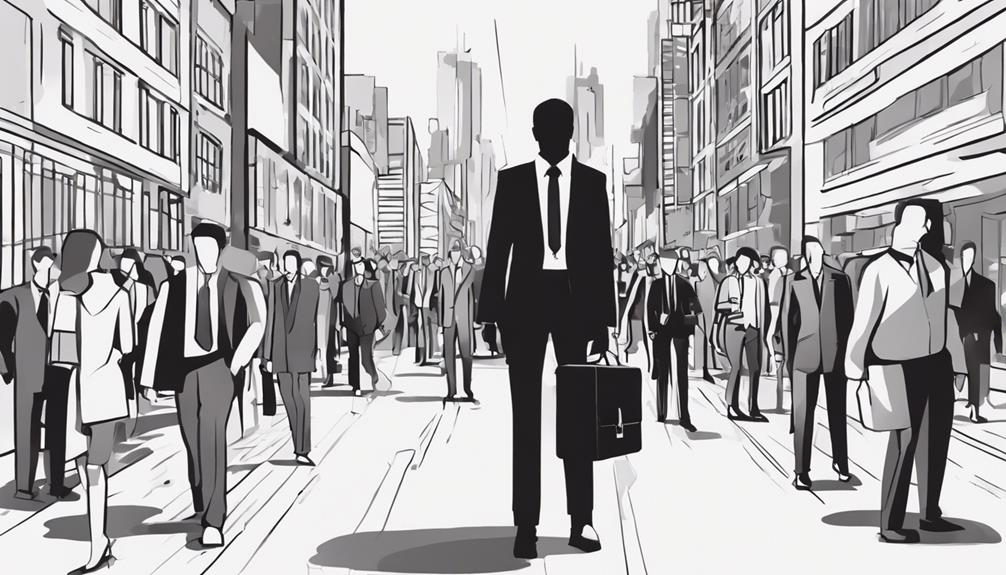
Transitioning between jobs or entering the workforce for the first time often leads to the phenomenon known as frictional unemployment. This type of unemployment is characterized by short-term periods of being without a job and is a natural part of a dynamic labor market. Several factors contribute to frictional unemployment:
- Job Search Time: The time it takes for individuals to find a new job can result in temporary unemployment. As individuals search for positions that align with their skills and preferences, there is a transitional period where they may be unemployed.
- Skill Mismatch: Mismatches between the skills workers possess and the skills that employers require can lead to frictional unemployment. Individuals may need time to acquire new skills or certifications to match the demands of available jobs.
- Geographic Mobility and Job Matching: Frictional unemployment can also arise from individuals seeking job opportunities in different locations. Matching the right person with the right job in terms of skills, preferences, and location can take time, contributing to this type of unemployment.
Understanding these factors is crucial for policymakers and job seekers to address frictional unemployment effectively. By reducing search times, improving information dissemination, and enhancing job matching processes, the impact of frictional unemployment can be mitigated.
Cyclical Unemployment
During periods of economic downturns and recessions, a notable increase in unemployment tied to business cycles emerges, affecting various industries and prompting government intervention. Cyclical unemployment is directly linked to the fluctuations in the economy, particularly when there is a decrease in the demand for goods and services. Industries such as construction and manufacturing are often hit hard by cyclical unemployment due to their dependence on consumer spending and business investments, which decline during economic crises.
To combat the negative effects of cyclical unemployment, governments often implement stimulus packages and monetary policies to stimulate economic growth and job creation. For example, during the Great Recession of 2008-2009, governments worldwide intervened with substantial stimulus measures to mitigate the rising cyclical unemployment rates.
Understanding the dynamics of cyclical unemployment is crucial for policymakers and economists to design effective strategies that can help stabilize the economy during periods of economic turmoil. By addressing the root causes of cyclical unemployment and implementing targeted interventions, governments can work towards reducing the impact of economic downturns on the labor market and society as a whole.
Structural Unemployment
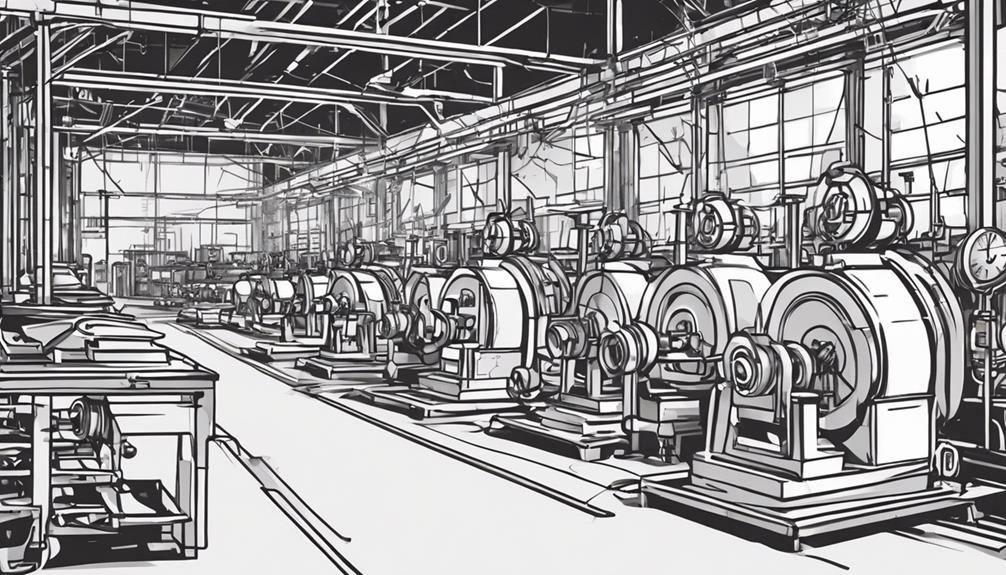
Structural unemployment presents a significant challenge as it stems from fundamental shifts in the economy, such as technological progress or changing market demands. The mismatch between the skills possessed by the workforce and the skills needed for available jobs can lead to prolonged periods of joblessness in specific sectors or regions. Addressing structural unemployment often necessitates comprehensive strategies like retraining programs and support for job transitions to facilitate smoother labor market adjustments.
Causes of Structural Unemployment
Amidst the dynamic landscape of the economy, fundamental shifts driven by technological advancements and evolving consumer preferences give rise to structural unemployment.
- Technological Advancements: Automation and digitalization lead to the obsolescence of certain job skills, causing a mismatch in the labor market as workers struggle to adapt to new requirements.
- Mismatch in the Labor Market: Rapid changes in industries can result in a surplus of workers with outdated skills and a shortage of those with the necessary expertise, exacerbating structural unemployment.
- Retraining and Policy Measures: Individuals affected by structural unemployment often need to retrain or acquire new skills to remain employable, highlighting the importance of targeted education programs and policy interventions to facilitate a smoother transition to emerging sectors.
Impact on Economy
The ramifications of structural unemployment on the economy are profound, necessitating a strategic approach to mitigate its enduring effects. Structural unemployment, stemming from mismatches in skills and available jobs due to long-term economic changes, poses challenges to workforce development and economic stability. This type of unemployment persists even in times of growth, demanding targeted interventions for resolution. Investment in retraining and education programs is crucial to assist workers in transitioning to industries with labor demands aligned to their skills. Policy measures aimed at realigning the workforce with evolving market needs play a pivotal role in addressing structural unemployment and fostering economic resilience.
| Keywords | Impact on Economy |
|---|---|
| Unemployment | Persistent challenges in workforce realignment |
| Structural Unemployment | Mismatch between skills and available jobs |
| Skills | Need for retraining and education programs |
| Workforce Development | Crucial for transitioning to new industries |
Institutional Unemployment
In the realm of labor market dynamics, institutional unemployment emerges as a critical phenomenon driven by factors such as minimum wage laws, labor unions, and government regulations.
- Institutional unemployment occurs when institutions or policies create barriers to employment, limiting job opportunities for individuals seeking work.
- Examples of institutional unemployment include occupational licensing requirements and restrictions on hiring practices, which can hinder job seekers from entering certain professions.
- This type of unemployment can persist even during times of economic growth due to systemic issues embedded within labor market regulations.
Addressing institutional unemployment often requires comprehensive policy reforms aimed at reducing barriers to employment and enhancing job prospects for individuals affected by these institutional constraints. By revisiting and adjusting labor market regulations, policymakers can work towards creating a more inclusive and accessible job market that mitigates the impacts of institutional unemployment on individuals and the economy as a whole.
How to Measure Unemployment
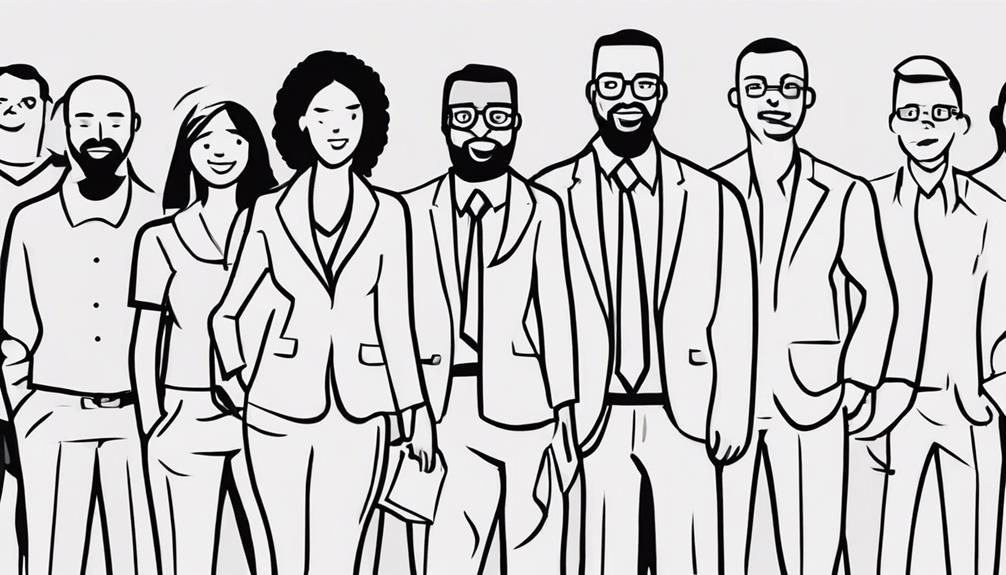
Quantifying workforce distress through precise metrics is essential to evaluating the economic landscape accurately. Measuring unemployment involves assessing the number of unemployed persons as a percentage of the total labor force. This calculation results in the unemployment rate, a crucial indicator used to gauge the health of the labor market. Unemployed persons are individuals who are actively seeking employment but are unable to secure a job. To gather data on unemployment, surveys like the Current Population Survey are conducted to provide accurate statistics. Understanding how to measure unemployment is vital for policymakers as it enables them to make informed decisions to address labor market challenges effectively. By tracking the unemployment rate and the number of individuals in the labor force who are actively seeking work but remain unemployed, policymakers can tailor interventions to support job creation and reduce unemployment levels in the economy.
History of Unemployment
Reflecting on the economic turbulence of various eras, the history of unemployment unveils a tapestry woven with fluctuating rates and societal impacts.
- Great Depression: The Great Depression marked one of the darkest periods in U.S. history, with the highest unemployment rate recorded at a staggering 24.9% in 1933. The era between 1931 and 1940 saw rates persistently above 14%, eventually dropping to single digits until 1982.
- Great Recession: In 2009, during the Great Recession, the unemployment rate climbed to 10%, reminiscent of the economic turmoil faced during the Great Depression. The impact was profound, with rates hitting 14.8% in April 2020, highlighting the lasting effects of financial crises on job markets.
- Historical Periods and Economic Conditions: Unemployment rates have fluctuated significantly across different historical periods, mirroring the economic conditions and crises of each era. As of January 2024, the U.S. unemployment rate stands at 3.7%, showcasing the ever-evolving nature of employment dynamics influenced by various economic factors.
Frequently Asked Questions
What Is the Simple Definition of Unemployment?
In the realm of economic impact, unemployment is a critical indicator within the job market. The unemployment rate signifies the percentage of jobless individuals actively seeking employment within the labor force. Underemployment issues, such as individuals settling for lower-skilled roles, can also be a concern. Understanding these dynamics is pivotal for analyzing labor market trends and assessing the overall health of an economy.
How Much Is Unemployment in Ca?
Unemployment in California currently stands at a rate of 5.4%, with approximately 1,036,000 individuals categorized as unemployed in January 2024. The labor force participation rate in the state was recorded at 61.7% during the same period. These figures offer insight into the jobless claims, labor force dynamics, and the economic impact of unemployment, reflecting ongoing employment trends and their repercussions on diverse sectors and regions within California's economy.
How Do You Explain Unemployment?
In explaining unemployment, we delve into its economic impact and relation to the job market. The unemployment rate, determined by jobless claims divided by the labor force, reflects the health of the workforce. Understanding this phenomenon is crucial for addressing labor market challenges and implementing effective policies. Structural, frictional, cyclical, and institutional factors contribute to unemployment, highlighting the complexity of this issue within the broader economic landscape.
What Is a Good Definition of Unemployment?
Defining unemployment is paramount for comprehending its economic impact on the job market, labor force, and employment opportunities. The unemployment rate, a key indicator, reflects the proportion of individuals actively seeking work but unable to secure employment. This definition underpins policy-making and economic analysis. Unemployment's repercussions ripple through society, influencing consumer spending, government policies, and social welfare programs. Understanding this definition is essential for navigating the complexities of the labor market and fostering sustainable economic growth.
Conclusion
In conclusion, unemployment is a complex economic phenomenon that serves as a critical indicator of the overall health of the economy. One interesting statistic to consider is that the current global unemployment rate stands at 5.7%, representing approximately 220 million people worldwide who are actively seeking employment but unable to find work. This highlights the significant impact of unemployment on individuals and the broader economy, underscoring the importance of effective policies to address this issue.
